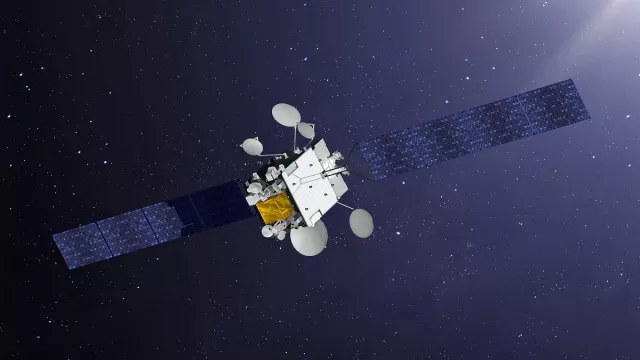The aim of the Syracuse 4 programme is to maintain an uninterrupted communications capability for the armed forces at all times (in peacetime, crises or major disasters), through a new generation of French military telecommunications satellites in geostationary orbit. Two satellites, Syracuse 4A and 4B, have so far been launched.
Key information
| Mission | Maintain uninterrupted communications capability at all times |
|---|---|
| Domain | Defence |
| Launch date | 2015 |
| Partners | DGA, Airbus Defence & Space, Thales Alenia Space |
| Where | Geostationary orbit |
| Lifetime | 15 years |
Key figures
- 2 satellites in constellation
- 3,500 kg: mass of each satellite
Key milestones
- 5 July 2023: Launch of Syracuse-4B by Ariane 5 ECA
- 24 October 2021: Launch of Syracuse-4A by Ariane 5 ECA
- December 2015: Programme initiated by DGA
Project in brief
Syracuse 4 (formerly COMSAT-NG) is employing a number of innovations to improve communications for the armed forces. These include new main antennas and ground control centres, as well as larger frequency bands (X and Ka band) and an anti-jamming system to boost communications capacity, flexibility and resistance to jamming.
The two satellites are carrying identical payloads. However, they are built around two different all-electric spacecraft buses: Thales Alenia Space’s SpaceBus Neo 100 for Syracuse 4A and Airbus Defence & Space’s Eurostar 3000 for Syracuse 4B.
Syracuse 4A was launched by Ariane 5 from Kourou in October 2021. Its in-orbit commissioning review was concluded in 2022, confirming the expected level of performance. Syracuse 4B was also launched from Kourou by Ariane 5 on its last flight in July 2023.
The two telecoms satellites are designed to support faster data rates driven by increasing battlefield digitization while providing satcom capacity to new users, notably UAVs, mobile ground stations and airborne platforms.
CNES’s role
CNES provided its expertise in value analysis and payload design to the French defence procurement agency DGA during the early phases of the programme’s inception and in negotiations with contractors. Since the signature of the development contract end 2015, CNES and DGA have been managing development together through an integrated team. CNES is also leading industry activities for the space system and performance assessment.
For any questions, please use the website’s contact form.


